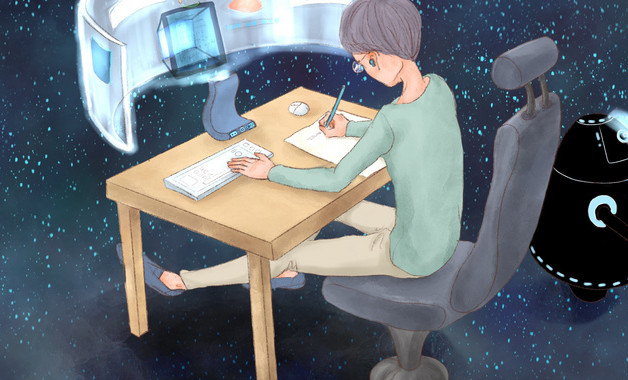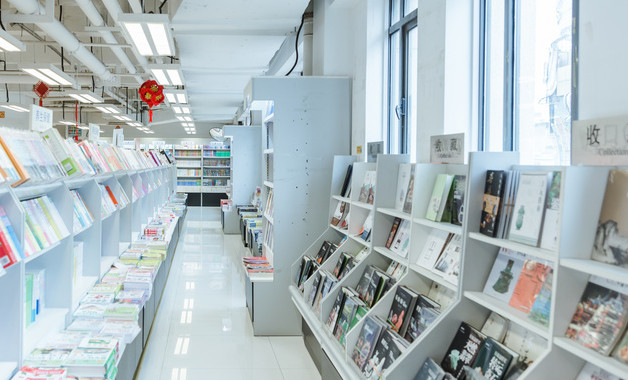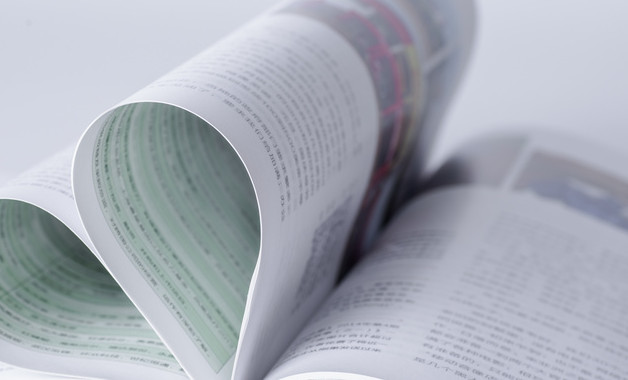
第1篇 天坛的导游词
阅读小贴士:本篇共计570个字,预计看完需要2分钟,共有217位用户收藏,19人推荐!
大家好:
我是北京天坛导游——刘雪琪,大家可以叫我刘导。今天我将陪同大家观光游览北京天坛。
我们现在看见的就是天坛。天坛是明清两朝皇帝祭天、祈祷丰收的场所,也是我国现存最大的一处坛庙建筑,天坛东西长1700米,南北长1600米。总面积为273万平方米,并有外坛墙和内坛墙,北面是圆形,南面是方形,象征“天圆地方”。
现在请大家跟我往里走。这里是祈年殿,它高38.2米,直径24.2米,坐北朝南,一整个大殿都是木质的,其中雕有金龙的四根代表春、夏、秋、冬四个季节。其余的代表十二个月和十二个时辰。
再往里走就是回音壁了,城壁使用磨砖砌成的,墙头覆盖着蓝色玻璃瓦。回音壁具有奇特的回音效果,一个人靠墙说话,传到一、二百米的另一端,对方听得清清楚楚,堪称奇趣,造成一种“天人感应”的神秘气氛。大家不防试一试。
请大家往回音壁的外围看,那是一株500余岁的桧柏,由于树干纹理非常的奇特,好像九条蟠龙缠绕嬉戏,所以它叫九龙柏。大家可以和它合影留念。
各位游客朋友们,今天北京天坛一日游就快结束了,大家玩得开心吗?希望下次有机会还能为大家做导游。
评语:这篇导游词突出的特点是:结构清楚,很有条理,行文语言流畅。开篇向旅客作礼貌问候,并进行了自我介绍。然后介绍天坛,作者先介绍天坛的用途及用数字介绍其轮廓,接着详细介绍天坛祈年殿、回音壁、桧柏。读完之后,让人不由得产生“到此一游”的美好愿望,激发旅客的兴趣。
第2篇 天坛的导游词
阅读小贴士:本篇共计1279个字,预计看完需要4分钟,共有130位用户收藏,18人推荐!
der himmelstempel in beijing
der himmelstempel war der ort, wo die kaiser der ming- und qing-dynastie um eine reiche ernte beteten. er wurde im jahr 1420 fertiggestellt und ist heute mit einer flauml;che von 273 ha der grouml;szlig;te tempelkomple_ chinas.
in der anfangszeit trug der himmelstempel den namen "himmels- und erdtempel". dort opferte der kaiser dem himmel und der erde. im jahr 1530 wurde der erdtempel im nouml;rdlichen vorort von beijing fertiggestellt. seither wird der himmels- und erdtempel als himmelstempel bezeichnet. jedes jahr zur zeit der sommersonnenwende und der wintersonnenwende begab sich der kaiser zum himmelstempel, wo groszlig;artige opferzeremonien stattfanden.
der himmelstempel ist von zwei mauern -- einer innen- und einer auszlig;enmauer - umgeben. deswegen teilt sich der himmelstempel in den innen- und auszlig;enteil. der heute himmelstempel genannte teil ist tatsauml;chlich der innere tempel. hier stehen der huanqiutan (himmelsaltar) im süden und der qigutan (altar der ernteopfer) im norden. die beiden hauptwerke sind durch eine 360 m lange terrasse, die als danbiqiao (brücke der roten palaststufen) bezeichnet wird, verbunden.
der huanqiutan war der platz, wo der kaiser jedes jahr zur zeit der wintersonnenwende dem himmel opferte. er wurde im jahr 1530 fertiggestellt und im jahr 1749 ausgebaut. die oberflauml;che des himmelsaltars war in der ming-dynastie mit blauen glasierten fliesen belegt. wauml;hrend des ausbaus in der qing-dynastie wurden die fliesen durch steine ersetzt. der kreisfouml;rmige huanqiutan symbolisiert den himmel und besteht aus 3 ebenen. im zentrum der obersten ebene steht eine groszlig;e kreisfouml;rmige steinplatte, die als "stein des himmelsmittelpunkts" bezeichnet wird.
die huangqiongyu (halle des himmelsgewouml;lbes) liegt nouml;rdlich vom huanqiutan und ist der ort, wo die gedenktafel "oberster herrscher des himmels" aufbewahrt wurde. auszlig;erhalb dieser halle befinden sich 10 seitenhallen. die haupthalle und die 10 seitenhallen werden von einer kreisfouml;rmigen mauer umgeben. die innenseite der mauer wird als "echomauer" bezeichnet, weil sich hier der schall auf optimale weise fortpflanzt. die echomauer wird von alters her als eines der "wunder vom himmelstempel" bezeichnet.
die qiniandian (halle der ernteopfer) ist haupthalle vom qigutan, wurde im jahr 1420 gebaut und ist ein dreistouml;ckiges rundes bauwerk. sie war im jahr 1889 abgebrannt und wurde 1890 wieder aufgebaut. hier kouml;nnen besucher die mit neun drachen bemalte decke der halle, die die vier jahreszeiten symbolisierenden sauml;ulen mit bemalten drachen und phouml;ni_en, die die 12 monate symbolisierenden goldfarbigen sauml;ulen und die die 12 tageszeiten symbolisierenden roten sauml;ulen sehen. jauml;hrlich am 8. tag des ersten monats des chinesischen mondkalenders ging der kaiser in begleitung seiner hohen beamten zu dieser halle, um eine reiche getreideernte zu erflehen.
huangqiandian liegt nouml;rdlich der qiniandian. sie ist eine halle, in der die gedenktafel der "gottheit des himmels" aufbewahrt wurde. sie wurde im jahr 1420 erbaut und im jahr 1545 umgebaut. in dieser halle gibt es eine quadratische steinplattform, auf der die gedenktafel der "gottheit des himmels" steht.
der zhaigong (fastenpalast) war der ort, wo die kaiser ein bad nahmen, drei tage lang fasteten und übernachteten, bevor sie zum himmel beteten. er besteht aus der haupthalle und der schlafhalle.
auszlig;er den hauptbauwerken wie huanqiutan, qigutan, huangqiongyu, qiniandian, huangqiandian und zhaigong verfügt der himmelstempel noch über viele untergeordnete bauwerke, die in der umgegend der hauptbauwerke liegen. der himmelstempel weist eine ins detail konzipierte gestaltung und harmonische farbgebung auf.
第3篇 天坛的导游词
阅读小贴士:本篇共计588个字,预计看完需要2分钟,共有153位用户收藏,16人推荐!
北京天坛是一个怎么样的景点呢?下面是小编为大家收集的关于北京天坛导游词作文,欢迎大家阅读!
北京天坛导游词作文尊敬的女士们、先生们、小朋友们:
大家好!
我是今天的导游盛泽西,大家可以叫我小盛。今天我们要参观的是天坛,它是世界著名文化遗产之一。今天,我很高兴和大家共同欣赏它美丽的景色和建筑,共度这段美好的时光,预祝大家玩得愉快!。
天坛是明清两代皇帝祭天的场所,始建于明永乐18年(1420年),以后经过不断的扩建,至清乾隆年间建成。它从建成开始,一直是皇帝祭天的专用祭坛,一直延续了490年,直到1911年辛亥革命封建帝制结束,它也完成了它的使命。1918年被辟为公园,从此后任人游览。1957年被列入北京市第一批古建筑文物保护单位。1961年被国务院列入第一批全国重点文物保护单位。
天坛公园现有面积为205万平方米,保存有祈谷坛、圜丘坛、斋宫、神乐四组古建筑群,有古建筑92座600余间。是世界上现存规模最大、形制最完备的古代祭天建筑群。天坛有3500余株古松柏、古槐,树龄逾数百年。
天坛不仅是中国古代皇帝的祭坛,也是中国悠久的祭天文化的结晶,其宏伟的建筑、苍翠的古树、丰富的文物收藏既记载了中国古代先民的企盼和希望,也记载了封建帝王的睿智、昏庸和腐朽。
各位亲爱的游客朋友们,我们今天的游览就要结束了。非常高兴能与大家共同度过这段美好的时光。对我今天的导游有什么不满意之处,请大家批评指正,谢谢!
北京天坛导游词作文,尽在酷猫写作范文网。
第4篇 天坛的导游词
阅读小贴士:本篇共计7706个字,预计看完需要20分钟,共有195位用户收藏,18人推荐!
天坛位于北京城区的东南部,原是明、清两代皇帝祭天、祈谷的圣地。北京天坛是明朝永乐皇帝建成的祭天圣坛,也是我国现存最大的一处坛庙建筑。下面是小编为你带来的天坛中英双语导游词,欢迎参考!
天坛中文导游词
各位游客,我们今天所要参观的就是以前皇帝祭天的地方——天坛。
明朝永乐皇帝迁都北京以后,在北京南城仿照南京的大祀殿建立了这作用于祭天的圣坛,占地面积达到了273万平方米。主建筑是大祀殿,也就是今天祈年殿的位置上。天坛有外坛墙和内坛墙,北面是圆形,南面是方形,取意天圆地方。在一开始,祭天和祭地都是天坛,直到明嘉靖年间在北城修建了地坛,才分开的,并且新增了圜丘坛,用于孟冬祭天,把原来的大祀殿改为大享殿,专门用于孟春祈谷,当时殿宇屋顶已经是三重檐了,从上至下的蓝黄绿三色瓦分别代表了天地万物。而在乾隆年间,有将大享殿改为现在的祈年殿,而将屋顶瓦片都改成了蓝色的琉璃瓦。从而形成了今天我们所看到的这个世界上最大的祭天建筑群。
可是这样一个祭天圣地,却也曾经在1860年时遭到英法联军的洗劫,继而在1920__年的时候又遭到了八国联军的蹂躏。在1920__年袁世凯登基的时候也曾经在天坛上演了一出祭天的闹剧。在1920__年,天坛最终还是以公园开放。解放以后天坛不仅成了著名的旅游景点,而且还是北京城市绿地的组成部分,来这里的不光是旅游者,还不乏一些专门为了强身健体的老人们。
现在就让我们沿着当年皇帝登坛的路线开始此次游览。
说完了神坛的奇妙,我在给您介绍一下祭天大典的盛况。到了每年的冬至,皇帝就要在这里祭天。在大典前两天,皇帝要在故宫里进行斋戒,而到了第三天,也就是冬至前一天,就要到天坛的斋宫进行斋戒。冬至那天,在日出前七刻,现在的凌晨四点多,奏报时辰,皇帝起驾,斋宫东北角的钟楼开始鸣钟。到具服台盥洗更衣,神牌都送到台面相应的位置,也就是七组神位,称作七幄;在圜丘前燔柴炉上放一只牛犊,用松枝燔烧,西南的望灯杆望灯高悬,点燃蟠龙通宵宝蜡,台南广场上排列着奏乐队,配合着中和韶乐,在文武百官的陪同下,祭天大典就正式开始了,皇帝由南棂星左门登坛,这时钟声停止,到了第二层南侧拜位站好后,听候司赞人报仪程。恭读至皇天上帝的祝文。礼仪结束以后,要将神位前的贡品分别送到燔柴炉(从正位幄次撤下的祭品再次焚烧,皇帝也要一旁恭立目视,称为望燎)和燎炉(圜丘坛共有12座燎炉,在瘗坎北侧,从东向西排列着8个;内围护墙东西棂星门外各有一对。从配位幄次车下的祭品分别送到8个燎炉内焚烧,而四个从位幄次的祭品送到棂星门处)焚烧,烟雾腾空,象征着送到天庭。而后还要将牛尾、牛毛、牛血送到瘗坎掩埋,象征不忘祖先茹毛饮血之意。在这个典礼上,需要特别提到的是皇帝恭读祝文所站立的地方,就是刚才所说的台面中心天心石。他是天坛三大声学现象之一。在这里朗读的时候声音特别洪亮,而且现在这里也是一样的,各位游客不妨体会一下这奇特的效果,也像当年的皇帝一样,向上天诉说自己美好的愿望。
现在咱们继续沿着中轴线行走,面前的建筑叫做天库,而它的正殿就是皇穹宇。皇穹宇建于明嘉靖九年,起初叫做泰神殿,到了十七年,改名为现在的皇穹宇,它的作用就是在平日存放圜丘坛祭祀主神的地方,所以这里也叫圜丘坛寝宫。殿内正面的圆形石台上安放的就是皇天上帝的神牌,而前边两侧的四个方形石台上安放的则是八位祖先神主,还有东西配殿用来存放从祀神位。而皇穹宇三个字也分别代表了至高无上,天,宇宙的意思,更加显示出它的神圣和至尊。
它是一座建筑艺术价值非常高的殿宇,总体呈圆形,下边是高2.85米的圆形须弥座,为青白石筑成,有东南西三个方向的出陛,也就是台阶,而在南向出陛还有二龙戏珠的丹陛石。上边是蓝色筒瓦单檐攒尖鎏金宝顶。而在殿内还有八根檐柱和八根金柱,大殿上架没有横梁承托,全都是靠各类斗拱层层上叠来支撑,步步收缩,从而形成了精美的穹隆圆顶。这里边还运用了物理学中的杠杆原理。这组建筑不仅十分精美,而且还有回音壁和三音石,这和刚才我们说的天心石合称天坛三大声学现象。回音壁就是皇穹宇的外墙,围墙建造的磨砖对缝,十分的平滑,是很好的声音载体,可以传声,在传递途中对声音损失极小,只要对着墙说话,就算相隔四五十米,见不到面,都可以清晰的听到对方说话。而三音石则是皇穹宇大殿正前方的三块石头,您站在第一块石头上拍手可以听到一次回音,第二块石头可以听到两次,而第三块就可以听到三次回音,所以称为三音石。在后来也有人把它叫做三才石,取天地人三才的意思。
也许您刚才就已经注意到了,天坛有非常多的柏树,不错,它就好像北京一个天然的氧吧。而在这许多古柏当中,有一株500余岁的桧柏,就是回音壁西墙外的这棵九龙柏。它的树干纹理非常的奇特,布满了沟壑,而且旋转扭曲,好像9条蟠龙缠绕嬉戏,所以叫它九龙柏真是一点也不过分。
谢谢大家,如有不妥之处,还望见谅。
天坛英文导游词
(inside the south gate of the temple of heaven)
ladies and gentlemen:
welcome to the temple of heaven. (after self-introduction) preserved cultural heritages of china. there are basically two kinds of visitors who come here: local pensioners who do e_ercises here in the morning and evening and sightseers both from home and abroad. all in all ,there are 12 million visitors very year. now we are going to go along the route that leads to the alter. it will take roughly one hour. mind you ,the emperor also walked along this route to pay tribute to the god of heaven.
(along the southern sacred road leading to the circular mound altar)
the largest group of architectures ever to be dedicated to heaven ,the temple of heaven served as an e_clusive altar for chinese monarchs during the ming and qing dynasties. it was decreed that rulers of successive dynasties would place altars in their own capitals to worship heaven and pray for good harvest. but why ?
the ancient chinese believed that heaven was the supreme ruler of the universe and the fate of mankind ,and thus worshiping rites dedicated to heaven came into being.
the heaven the ancient chinese referred to was actually the universe, or nature. in those days, there were specfic rites of worship. this was especially true during the ming and qing dynasties when elaborate ceremonies were held.
the temple of heaven was built in 1420 during the reign of emperor youngle of the ming dynasty. situated in the southern part of the city ,this grand set of structures covers an area of 273 hectares. to better symbolize heaven and earth ,the northern part of the temple is circular while the southern part is square .the whole compound is enclosed by two walls, a square wall outside a round one. the outer area is characterized by suburban scenery, while the inner part is used for sacrifices. the inner enclosure consists of the hall of prayer for good harvest and the circular mound altar.
(along the imperial passage leading from the southern lattice star gate in front of the circular mound altar)
the circular mound altar is enclosed by two walls ,each containing four groups of southern lattice star gate, each in turn consisting of three doors, with 24 marble doors altogether. standing on the passage facing north, you will notice that with each pair of doors on is narrower than the other. this reflects the feudal hierarchy: the wider door was reserved for monarchs, while the narrower one was used by courtiers.
on the day of the ceremony ,the emperor would don his ritual costume and be ushered in by the official in charge of religious affairs. he ascended the three terraces in the forefront to pay tribute at the alter.
(atop the circular mound alter)
we are now on the top terrace of the
altar, or the third terrace .each terrace has a flight of 9 steps. at the center of this terrace lies a round stone surrounded by 9 steps. at the center of this terrace lies a round stone surrounded by 9 concentric rings of stone. the number of stones in the first ring is 9, in the second ,18, up to 81 in the 9th ring. even the number of carved balustrades on these terraces is a multiplee of 9. but why?
according to ancient chinese philosophy, yin and yang were two opposing factors. heaven and the odd numbers belonged to yang while the earth and even numbers belonged to yin. nine was the largest heavenly number accessible to man . what is more, the ancient people also believed that heaven consisted of nine layers and that the emperor` s abode was on the uppermost tier.
once more look at the round stone in the center. the upper terrace is nine zhang (a chinese unit of length, one zhang equals 3.3 meters ) in circumference ,while the middle is 15 zhang, the lower, 21 zhang. classified as yang numbers, the sum of these numerals is 45 zhang which was meant to symbolized success. what is more, by applying the concept of odd numbers and strengthening nine and its multiples, the concept of heaven was thus illustrated and realized . the concept of nine will also be mentioned when we visit some other buildings.
now i will give you a brief account of what happened here annually on the inter solstice. the memorial tablet dedicated to heaven would be set up on the north side of the terrace, while tablets dedicated to the emperor `s ancestors would be enshrined on the flanks. the service would begin around 4 o` clock in the morning. all of the lanterns would be lit .in the foreground, a sacrificial calf is being barbecued. on the square in front of the altar, the emperor, under heavy escort of nearly a thousand courtiers, princes of royal blood ,musicians, dancers and uniformed soldiers, would slowly ascend the altar to offer sacrifice and pray in honor of heaven. when the service drew to a close ,the sacrifice offered in front of the memorial tablets would be incinerated .all of participants would watch the thick smoke rise upward as if they were seeing god off .music and dancing would follow .in the end ,the emperor would return to the forbidden city secure in the belief that he would be blessed and protected by heaven until the ne_t winter solstice.
it is interesting to note that ,the stone in the very middle of the altar was of major importance ,since it was where the emperor used to stand to say his prayer. the stone ,which is known as the god`s heart stone, is peculiar in that it is characterized by a specific acoustic phenomenon: it made the emperor` s voice clearer and louder, thus adding to the mystic atmosphere of the service .you can try this out by yourself. (proceed northward to pass through the lattice stargate)
(in front of the gate of glazed tiles)
this structure is known as heaven` s storehouse. it is entered through the gate of glazed tiles. the roofing ,beams, and brackets are all made of glazed tiles or bricks. this is the only structure of its kind in china today .
the heaven` s storehouse was where memorial tablets dedicated to the gods were kept. douglas hurd, a former british foreigh secretary ,once said , “god attends to his affairs on the cir4cular mound altar but stays here. ” now let` s go in to to see it (go through the left side door)
(in the courtyard of heaven` s storehouse)
this is the imperial vault of heaven, the main structure of heaven` s storehouse. it was built in 1530 and is 17 meters in height and 19 meters in diameter. the structure feature blue roofs topped by a gilded ball ,and carved wooden doors and windows. it is decorated with colored paintings. founded on a 3-meter-hign round marble terrace ,the building also features a gigantic carved marble ramp laid in the stone staircase leading up to the front entrance.. the ramp is carved in “two dragons playing with a pearl ” design in relief. we will enter the main hall by going up the stone staircase on the eastern side.
(on the marble terrace of the main hall)
the arch of the hall is buttressed by 16 giant pillars on two rings. on top of the pillars there are gilt brackets supporting a circular caisson ,or covered ceiling .the ceiling is characterized by a golden coiling dragon design. the 8 pillar of the inner ring are painted scarlet and decorated with golden lotuses.
to the north of the hall there is a marble pedestal. atop it ,up a wooden flight of 9 steps, is where the major tablet dedicate to heaven was enshrined. on each flank four tablets are enshrined in honor of the ancestors of the qing emperors. in the anne_ hall in hornor of the ancestors of the qing emperors. in the anne_ halls in the courtyard, there are tablets dedicated to the deities of the sun, moon ,constellation, cloud ,rain, wind and thunder.
(echo wall and triple –sound stones)
aside from e_quisitely laid out architectures, heaven` s storehouse is also famous for two structures with peculiar acoustic features, i. e. the echo wall and the triple- sound stone. a mere whisper at any point close to the wall can be heard clearly on the other side, although the parties may be 40 or 50 meters apart. this is possible because the wall is round and hermetically constructed with smooth ,solid bricks.
in front of the steps leading away from the halls is the triple sound stone. if you stand on the first stone and call out or clap your hands, the sound will echo once; on the second stone, the sound will be heard twice; and on the third stone, the sound will repeat three times. hence the name. (go out through the right door and stroll along the circular path nor thward)
(nine-dragon cypress)
the temple of heaven is also famous for its cypress trees-there are more than 60,000 cypress trees in all ,among which over 4,000 are more than one hundred years old ,adding to the solemn atmosphere of the temple .this tall cypress was planted more than 500 years ago. its thick branches and twisting trunk resembling nine coiling playful dragons; thus it is known as the nine-dragon cypress. it is said that this tree was here to welcome the monarchs. now it is here to welcome visitor from all over the world.
(in the south of chengzhen gate)
now we are back again on the central a_is. this brick-arched gate is known as chengzhen (adopting fidelity) .this gate is the northern gate of the circular mound altar and the hall of prayer for good harvest. the hall of prayer for good harvest is situated at the e_treme end of the a_is. it was used by the emperor in the first month of every lunar year for services dedicated to good harvest.
(on the red stairway bridge)
entering the hall of prayer for good harvest, we set foot on a raised passage 360 meters long, which the emperor also took to proceed to the hall. this broad north-south walkway, called danbiqiao (red stairway bridge), connects the two sets of main building in the temple of heaven and constitutes a single a_is.
the passage is divided into left, control and right paths by the cross arrangement of slabs. the central and the widest path is known as heavenly thoroughfare , which was reserved e_clusively for god; nobody, including the emperor, was allowed to set foot onto it . the emperor used the path on the east ,which is known as the imperial walk. the ministers and princes used the one on the west .interesting enough ,there is no walkway left for ordinary people. this is because the temple of heaven used to be off-limits to them.
contrary to appearances, this walkway is not a bridge at all . but how so ? this road is 4 meters above the ground and there is a cavern underneath that was reserved for sacrificial o_en and sheep. the cattle were slaughtered at a slaughterhouse about 500 meters away and brought here for sacrifice. all in all ,it can be said this walkway did serve as bridge and can be looked upon as the first cloverleaf in beijing.
looking back at the thoroughfare, you may realize that this walk is gaining height toward its northern end. as people approach the architectural group of the hall of prayer for good harvest, the flanking groves of cypress recede and perspective widens. here you are in heaven.
(costume-changing terrace)
the marble terrace up ahead is called jufutai, or costumechanging terrace. it is located to the east of the red stairway bridge and covers a space of 25 square meters .it has marble slab balustrades. the day before the service ,officials in charge would put up a yellow satin tent on the terrace for the emperor to change out of his yellow dragon robe into blue ceremonial clothes. after the service, the emperor would return to the tentand change back into his imperial robe before returning to the palace. (proceed to the south gate of the hall of prayer for good harvest)
(at the gate of prayer for good harvest)
this structure is called the gate of pray for good harvest. we can catch a slight glimpse of the central building ,the hall of prayer for good harvest, though the colonnade of the gate. a gigantic and lofty group of buildings, the comple_ includes the gate of prayer for good harvest, the hall of prayer for good harvest, eastern and western anne_ halls ,the huanqian (imperial heaven) long corridor, heaven kitchen, slaughterhouse, etc.
the anne_ halls were symmetrically built on a 1.5-meter-hignbrick-and-marble terrace ,to set off the loftiness and magnificence of the main hall .this unique building ,38 meters in height, is characterized by a cone-shaped structure with triple eaves and a top that is crowned by a gilt ball. the roofing is made of blue glazed tiles, the color of the sky .underneath the roof, the beams and bracket are decorated with colored paintings. the base of the structure is a triple-tiered, circular marble terrace. at a distance, the terrace looks like a gigantic, spiraling cloud with the structure perched on top of it .
today the hall of prayer for good harvest is the hallmark of beijing, which enjoys a prolonged history of civilization.
(at the base of the hall of prayer for good harvest)
the base of the hall is a triple-tiered, circular marble terrace, which is 90 meters in diameter and 6 meters in height ,covering a space of 4,000 square meters. meticulous accuracy was given to the layout of the structure. in the middle of each three-tiered flight of stairs, there is a giant marble ramp carved in cloud, dragon and phoeni_ designs. to set off the ramps, the top of the balustrades and downpipes are designed with corresponding floral scrolls. in southern part of each tier, a gigantic bronze incense burner is placed. sandalwood was burnt in them when rites were observed.
(in front of the hall of prayer for good harvest)
climbing up this marble terrace, we see the main hall ,a masterpiece of ancient china. looking up you will see the caisson, or covered ceiling, characterized by comple_ designs of dragons and phoeni_es. in and out , the hall is decorated with colored drawing of dragons and phoeni_es.
without the use of steel ,cement and nail, and even without the use of big beams and crossbeams, the entire structure is supported by 28 massive wooden pillars and number of bars, laths, joints and rafters. the four central pillars, called the dragon-well pillars, are 19.2 meters high and painted with designs of composite followers, representing the four season. there are two rings of 12 scarlet pillars each. the inner ring represents the 12 months and the outer rings the 12 divisions of the day and night .between the two rings there are 24 partitioned spaces to mark the solar terms of the chinese lunar year. the pillars, 28 in number, also represent the 28 constellations in the universe- the ancient chinese believed that there were 28 constellations that made up the sky.
the center of the stone-paved floor is a round marble slab, which is 88.5 centimeters in diameter. interestingly, the slab features natural black and white veins, corresponding to the dragon-phoeni_ design on the ceiling. this particular slab is known as the dragon-phoeni_ stone and is regarded as a treasure inseparable from the hall.
the furnishings within the hall are placed in their original positions dating back to when emperor _ianfeng ruled .in the forefront and above the throne are enshrined tablets in commemoration of heaven. on either table on each side tablets of the emperor` s ancestors were placed. each tablet is fronted by an altar. a total of 24 kinds of offering were made on it ,including soup, wine, assorted cereals, and a calf.
the sacrificial rites were observed in the wee hours of the morning, sometime in the first month of the chinese lunar year. because it was still dark, candles, lanterns and torches were lit. this lighting coupled with the incense being burnt inside the hall ,helped make the ceremony both grand and mystical.
by the time the service began,207 musicians and dancers would be performing on platforms outside the hall. the emperor, in his blue sacrificial robe and with an air of piety and sincerity, would walk slowly into the hall, kowtow, and offer wine and prayer in hornor of the deities and his ancestors. all of the offerings would then be taken to incinerators on the eastern side of the gate of prayer for good harvest. with this we conclude our visit to the temper of heaven. the feudal monarchs and their sacrificial rites have long vanished in history .however, this group of magnificent and lofty structures remain as a fine testament of the ancient chinese` s ingenuity and as one of the cultural heritages of mankind.
(on the long corridor)
from the eastern gate of the hall of prayer for good harvest, we have now enter a 300-meter-long corridor. consisting of 72 sections, this corridor served as a connecting building between the slaughterhouse. heaven kitchen, and the main hall ,it is said that this once served as a sacrificial food production line. flanking the corridor are shopping stalls. you may find some souvenirs for your family and friend there.
well ,that is all for this tour. thank you for your attention. i look forward to your ne_t visit. good luck and bon voyage.
第5篇 天坛的导游词
阅读小贴士:本篇共计409个字,预计看完需要2分钟,共有281位用户收藏,30人推荐!
各位游客:
大家好!欢迎来到北京天坛。我叫汤采璇,你们可以叫我汤导游。希望大家玩得开心,玩得愉快!
朋友们,现在到的地方就是北京天坛。大家往上看,有三个想似ufo的天坛。这么大,真是气魄雄伟!
天坛在原北京外城的东南部。位于故宫正南偏东的城南,正阳门外东侧。始建于明朝永乐十八年(1420年)。是中国古代明、清两朝历代皇帝祭天之地。总面积为273公顷,是明清两代用以祭天祈谷的建筑。天坛1961年,国务院公布天坛为全国重点文物保护单位。1998年被联合国教科文组织确认为世界文化遗产。
天坛占地272万平方米,整个面积比紫禁城(故宫)还大些,有两重坦墙,形成内外坛,主要建筑祈年殿、皇穹宇、圜丘建造在南北纵轴。坛墙南方北圆,象征天圆地方。圜丘坛在南,祈谷坛在北,二坛同在一条南北轴线上,中间有墙相隔。圜丘坛内主要建筑有圜丘坛、皇穹宇等,祈谷坛内主要建筑有祈年殿、皇朝乾殿、祈年门等。
各位游客,今天的行程就到这里,欢迎大家有时间再来细细游赏。
小学生北京天坛导游词作文
第6篇 天坛的导游词
阅读小贴士:本篇共计336个字,预计看完需要1分钟,共有177位用户收藏,30人推荐!
今天我苏彪,带你们来游览一下我国著名的天坛。
我国天坛建于公元15世纪上半叶,坐落在皇家园林当中,四周杏松环保,是保存完好的坛庙建筑群,无论再整体布局还是单一建筑群上,到反映出天地之间的关系,而这一关系在中国古代宇宙观中占着核心位置。同是,这些建筑还体现出帝王将相在这一关系中所起的独特作用。
天坛位于北京市崇文区永定门内大街左侧,是明清两代帝王祭天祈谷、夏至祈雨、冬至祭雪的圣地。
天坛主要建筑均位于内坛,从南到北排列在一条直线上。全部宫殿、坛基都朝南呈圆形,以象征天。整个布局和建筑结构,都具有独特的风格。祈年殿是皇帝祈祷五谷丰收的场所,是一座三重檐的圆形大殿,高38米,直径32.72米,蓝色琉璃瓦屋顶,全砖木结构,没有大梁长檩,全靠28根木柱和36根枋桷支撑,在造型上具有高度的艺术价格。
第7篇 天坛的导游词
阅读小贴士:本篇共计314个字,预计看完需要1分钟,共有164位用户收藏,24人推荐!
我国天坛建于公元15世纪上半叶,坐落在皇家园林当中,四周杏松环保,是保存完好的坛庙建筑群,无论再整体布局还是单一建筑群上,到反映出天地之间的关系,而这一关系在中国古代宇宙观中占着核心位置。同是,这些建筑还体现出帝王将相在这一关系中所起的独特作用。
天坛位于北京市崇文区永定门内大街左侧,是明清两代帝王祭天祈谷、夏至祈雨、冬至祭雪的圣地。
天坛主要建筑均位于内坛,从南到北排列在一条直线上。全部宫殿、坛基都朝南呈圆形,以象征天。整个布局和建筑结构,都具有独特的风格。祈年殿是皇帝祈祷五谷丰收的场所,是一座三重檐的圆形大殿,高38米,直径32.72米,蓝色琉璃瓦屋顶,全砖木结构,没有大梁长檩,全靠28根木柱和36根枋桷支撑,在造型上具有高度的艺术价格。
第8篇 天坛的导游词
阅读小贴士:本篇共计449个字,预计看完需要2分钟,共有193位用户收藏,27人推荐!
各位游客:
大家好!欢迎来到北京天坛。我叫“汤采璇”,你们可以叫我“汤导游”。希望大家玩得开心,玩得愉快!
朋友们,现在到的地方就是北京天坛。大家往上看,有三个想似ufo的天坛。这么大,真是气魄雄伟!
天坛在原北京外城的东南部。位于故宫正南偏东的城南,正阳门外东侧。始建于明朝永乐十八年(1420年)。是中国古代明、清两朝历代皇帝祭天之地。总面积为273公顷,是明清两代用以“祭天“”祈谷“的建筑。天坛1961年,国务院公布天坛为”全国重点文物保护单位“。1998年被联合国教科文组织确认为“世界文化遗产”。
天坛占地272万平方米,整个面积比紫禁城(故宫)还大些,有两重坦墙,形成内外坛,主要建筑祈年殿、皇穹宇、圜丘建造在南北纵轴。坛墙南方北圆,象征天圆地方。圜丘坛在南,祈谷坛在北,二坛同在一条南北轴线上,中间有墙相隔。圜丘坛内主要建筑有圜丘坛、皇穹宇等,祈谷坛内主要建筑有祈年殿、皇朝乾殿、祈年门等。
“各位游客,今天的行程就到这里,欢迎大家有时间再来细细游赏。”
第9篇 天坛的导游词
阅读小贴士:本篇共计486个字,预计看完需要2分钟,共有143位用户收藏,10人推荐!
各位游客:你们好,我叫,这天由我来做你们的导游!
这天我们旅游的景点是天坛,此刻,让我们一齐上车,请注意系好安全带。此刻,我们已经到达天坛,请各位游客下车。
游客们,当一进正门,我们将会看到许多个形状像坛子似的建筑,据说这个景点在一八六零年曾遭到英法联军的洗劫,一九零零年还遭受到八国联军的蹂躏。然而,在新中国成立以后,那里成为了著名的旅游景点。此刻我们就以皇帝登坛的路线进行游览。
首先我们观赏第一个坛,它叫“圆丘坛”,它有两个防护墙,还有一些阶梯和古人的雕像。此刻我们要登坛了,游客们,请你们最好数一下脚下的阶梯,到了二楼,你们会看到许多各种各样的雕像,他们都是古代的名人。游客们,此刻你们能够自由观赏,但请注意,不要乱涂乱画,带小孩的游客请管理好自己的小孩,一小时后,我们将会前往“天库”。
此刻我们已经到达“天库”了,它的正殿就是皇穹宇,上面有三个石头,它们被称为“三音石”。只要你们在第一块石头拍手一下,它就回声一下,在第二块石头拍手一下,它就回声两下,在第三块石头拍手一下,它就回声三下,所以,它们才被称之为“三音石”。
此刻,是游客们自由活动时间,三小时后,我们在天坛正门集合,谢谢大家!
第10篇 天坛的导游词
阅读小贴士:本篇共计499个字,预计看完需要2分钟,共有106位用户收藏,14人推荐!
大家好,我就是今天带领大家游览北京天坛的导游,我姓陈,你们可以叫我陈导。
大家注意,我们现在在位于北京南部,东城区永定门内大街东侧的世界文化遗产之一,天坛的内部。现在请跟我一起去细细游赏这北京的天坛吧!
天坛是全国文明风景旅游示范点,始建于明永乐十八年,也就是1420年,在清乾隆、光绪的时候曾重新修建,是明、清两代帝王祭祀皇天和祈五谷丰登之场所。天坛有坛墙两重,形成了内外坛,坛墙南方北圆,有“天圆地方”之说。主要建筑在内坛,大家随着我的手指朝南方看,那儿有圜丘坛,再向北边看,那有一座祈谷坛,这二坛同在一条南北轴线,非常奇特。
大家请往这二坛中间看,有一条甬道—单陛桥,它又称神道,长就有360米、宽有30米,把这两坛连成一个整体。游客们,让我们继续往前走,来到圜丘坛外壝北侧,绕过皇穹宇,现在,我们已经来到回音壁了。
回音壁是皇穹宇院落周围的圆形围墙,墙高3.72米,厚0.9米,墙身用山东临清砖磨砖对缝,蓝琉璃筒瓦顶。当我们分别站在东西配殿的后面靠近墙壁轻声说话,虽然距离这么远,但是可以非常清楚地听见对方讲话的声音。—故称回音壁。
现在大家可以自由活动,拍照留念,一个小时后在这集合。感谢大家听我的讲解,感谢
谢大家对我的支持!










